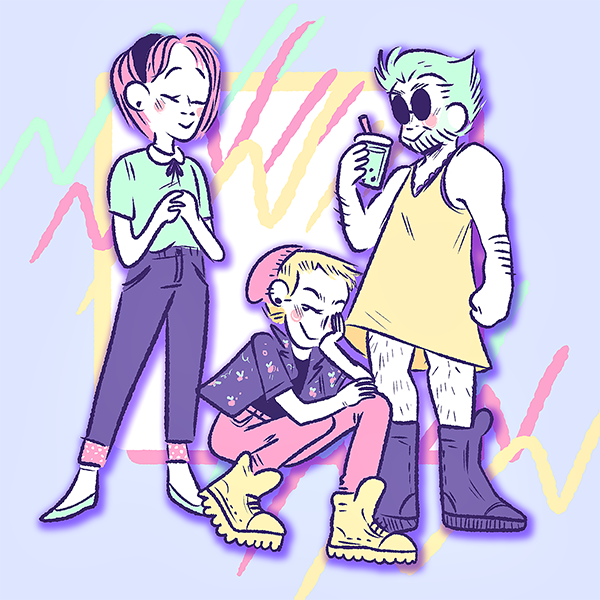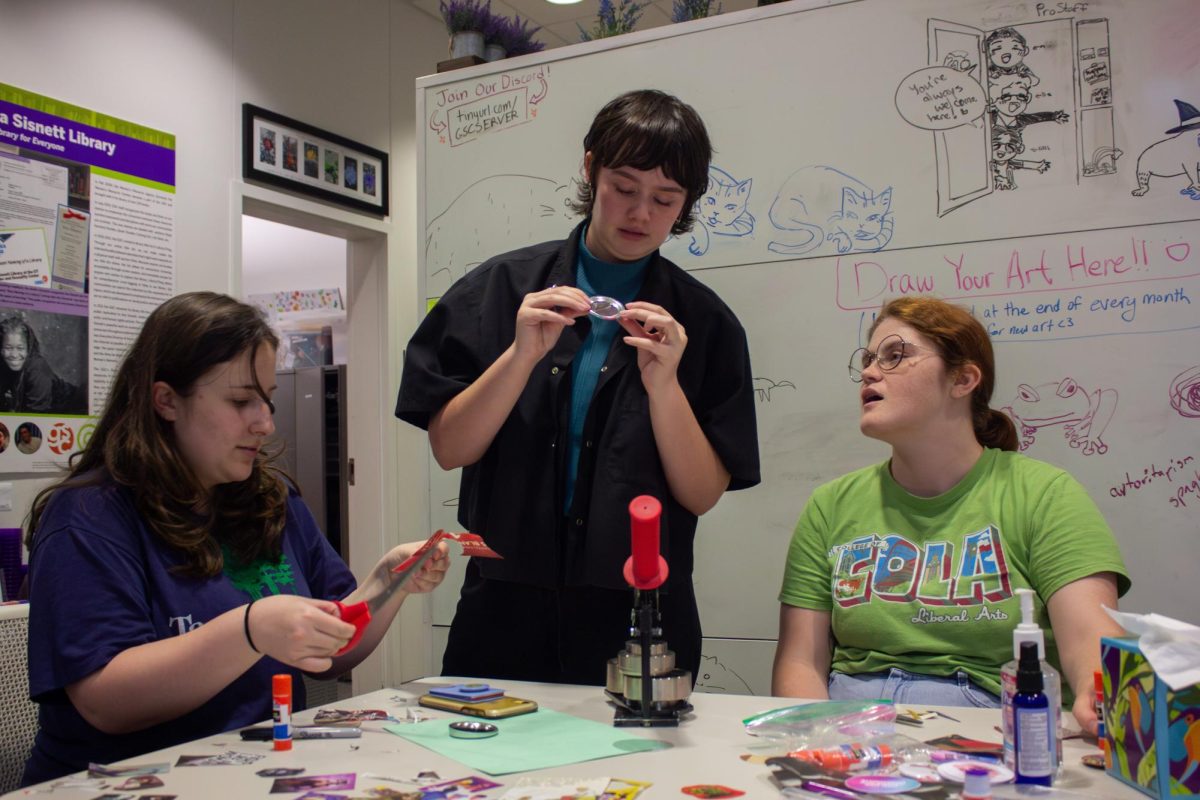Angel wings and skirt in hand, Angel Flores gets ready to go out to a Halloween party. She takes some pictures with friends and enough compliments give her the courage to post them to Twitter. She then adds a caption, where she reveals her journey in exploring her gender identity and includes her preferred name, Angel, and pronouns, she/her.
“I haven’t smiled that wide before in my entire life,” Flores said. “That experience made me feel very validated.”
Gender expression is one’s outward presentation of themself and how it may correlate to their gender. Each person is different, and identity and expression often, but don’t always, intersect.
Kinesiology junior Flores said it wasn’t until college that she was exposed to different gender identities. She said by talking with close friends and family and seeking counseling at the UT Counseling and Mental Health Center, she was able to explore her gender identity.
When she came out as transfeminine after identifying as cisgender male for the first 19 years of her life, Flores said she received an outpouring of encouraging messages.
“I had like 100 people messaging me like, ‘Oh my god, you look so beautiful,’” Flores said. “Then my friends who have me on social media asked me my pronouns, my name (and said) ‘What do you prefer?’ (and) ‘You look amazing.’”
Flores said it’s important for people to feel free to question their gender identity and experiment with their expression.
Like Flores, Alma Zamora, radio-television-film sophomore, said she found her preferred way of presenting herself by exploring her gender expression.
Zamora began experimenting with her gender expression in junior high and tried both hyper-feminine and hyper-masculine ways of presenting herself. She said she later realized she was happiest when she explored both her feminine and masculine sides. For her, that means having short hair and dressing in loose dress shirts, colorful fabrics and the occasional dress or skirt.
“I found this nice, happy medium where I was still embracing the masculine side of myself and then also embracing the feminine side of myself,” Zamora said.
However, Zamora said she sometimes finds herself explaining her identity to strangers. In some instances, she said the students she works with in an afterschool program refer to her as a boy because of her short hair and way of dressing.
“The first few times, it’s funny,” Zamora said. “I understand that my look tends to be more on the androgynous side. I just don’t dress particularly feminine. But after a while with kids and even with adults, it kind of wears you down because I’m constantly feeling like I have to validate my identity.”
Zamora said the constant questions sometimes cause her to question her form of gender expression all over again. She said over the summer she tried to grow out her hair, but she cut it again when she realized she was doing it for others rather than for herself.
“Something as simple as (asking), ‘What are your pronouns?’ when you introduce yourself just removes any confusion because you can’t tell what someone’s identity is by just looking at them,” Zamora said.
Sociology professor Gloria González-López studies women and gender. In her classes, she said she asks students to share their name and pronouns during initial introductions. González-López said although conversations surrounding gender identity and expression are sometimes difficult to navigate, they are important.
“It’s an opportunity to say, ‘This is who I am,’ and also not to make assumptions,” González-López said. “It is also a sign of respect, validation, visibility.”





















